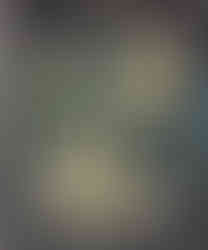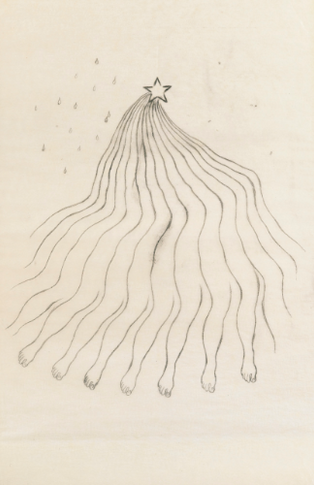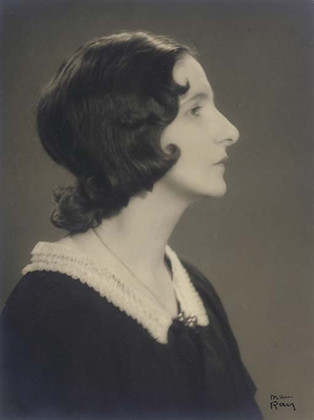Valentine Hugo - Gifted Gallery
- Lilium

- Dec 20, 2020
- 3 min read


Valentine Hugo, born March 16, 1887 in Boulogne-sur-Mer, was a French artist and writer.
She was born Valentine Marie Augustine Gross, only daughter to Auguste Gross, a professional painter and Zélie Démelin. A lover of the theatre and music, Hugo's father raised her to share his interests until his death in 1903, which was undetermined as suicide or an accident. After her husband's death, Zélie raised her daughter alone.
Valentine received schooling in Boulogne-sur-Mer, where she received multiple awards for accomplishments in drawing, until 1907, at which time she entered the L'École des Beaux-Arts in Paris. In 1908, Valentine Hugo met the artist Edmond Aman-Jean, who painted her portrait in 1909 and encouraged Hugo's artistic pursuits. She worked in the studio at the Académie Humbert and exhibited in the Salon of French artists in 1909, and again in 1911.
Valentine's work with the Ballets Russes established her connection with Jean Cocteau, who would introduce her to several important figures in her life, including her future husband French artist Jean Hugo, great-grandson of Victor Hugo.
Her involvement with the ballets provided her many opportunities to progress her artwork. She often drew sketches of the ballets' choreography, and had a particular fascination with dancer and choreographer Vaslav Nijinsky. In 1913 she exhibited her paintings at the Théâtre des Champs-Elysées during the premiere of The Rite of Spring.
Valentine collaborated with Cocteau to create the ballet Parade, which premiered on 18 May 1917. Hugo also worked on several other of Erik Satie ballets, including Le Piège de Méduse, Socrate, and Mercure.
She would collaborate with her husband Jean Hugo on ballet designs including Les mariés de la tour Eiffel in 1921, and later in 1926 she executed 24 wood engravings after maquettes by Jean Hugo for Jean Cocteau's production of Roméo et Juliette.
She alternated between creating disguises and “puppet-masks” for the Noailles and Beaumont costume balls and designing costumes and sets with her husband for the theatre productions.
Hugo hosted salons with many artists, writers, and musicians in Paris, including avant-garde leaders such as Pablo Picasso, André Breton, and Paul Éluard. She would often sketch her visitors, foreshadowing her portraiture work of the Surrealist leaders later on.
Hugo met André Breton in 1917, before the start of Surrealism, at one of Cocteau's readings. Her friendships with Breton and Éluard would keep her connected to the Surrealists as the movement developed, and help her to form connections with other members, such as Salvador Dalí and Max Ernst. The three often traveled together, along with other members of the movement, in 1931 and 1932. As the only member of the group who owned a vehicle, Hugo would drive her companions to their destinations.
Valentine and Jean began living apart in 1926, and eventually divorced in 1932. Her separation from her husband allowed Hugo greater freedom to be involved with the Surrealist group. She moved into the same building as Eluard and Breton in May 1932.
Hugo became primarily known for her drawings, where a fine line against a dark background created an abundance of decorative volutes and superimposed elements. Her portraits of the leading surrealists and her illustrations for texts by René Char and Paul Éluard and for the edition of Achim von Arnim's Strange Tales with a preface by Breton in 1933 are particularly interesting. The foremost illustrator of Paul Éluard's work, she first exhibited with the surrealists in the Salon des Surindépendants of 1933.

Hugo joined the Bureau of Surrealist Research and created the Objet à fonctionnement symbolique in 1931, which was shown during the Exposition surréalistic in 1933. Other artists who took part in the exposition were Salvador Dali,
Alberto Giacometti, René Magritte, Man Ray and Max Ernst.
Valentine took part in other exhibitions throughout her time with the group, including an exhibit at the Museum of Modern Art in 1936.
Hugo participated in the exquisite corpse game practiced by the Surrealists, collaborating on drawings with Breton, Éluard, and many others. These drawings have an illusionist quality credited to Hugo's participation. She introduced new mediums to the practice, as the drawings she participated in used gouache on black paper.

In 1943, Hugo's work was included in Peggy Guggenheim's show Exhibition by 31 Women at the Art of This Century gallery in New York. After the war, she went back to stage design for choreography, while continuing to create her paintings "in secret," saving "the haunting element of surprise and chance for the end." In 1948, she completed the portrait of Picasso she had started in 1934.
Hugo died on 16 March 1968, the date of her 81st birthday.































































































































































































































































Comments